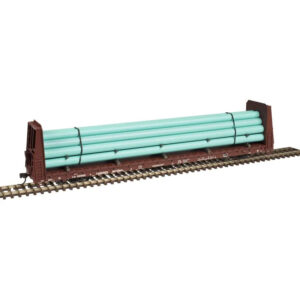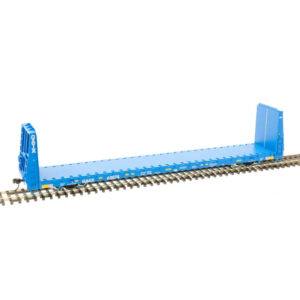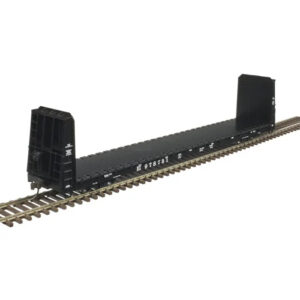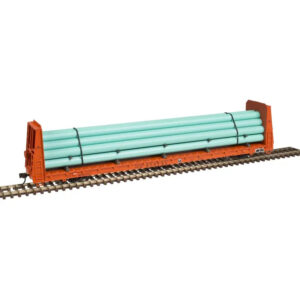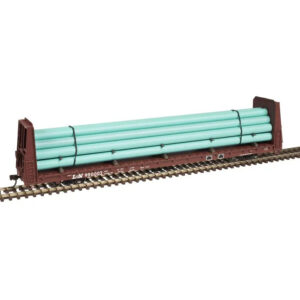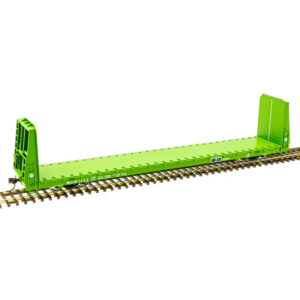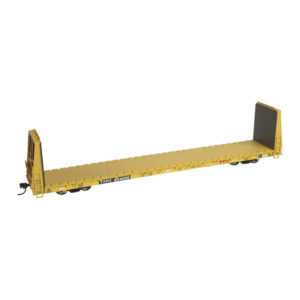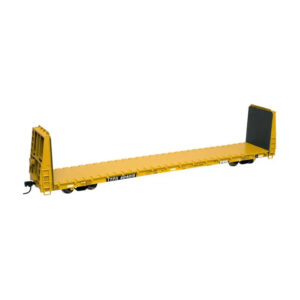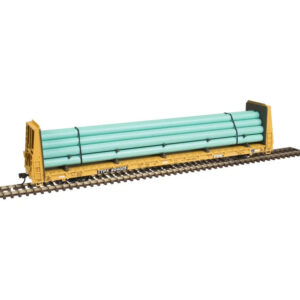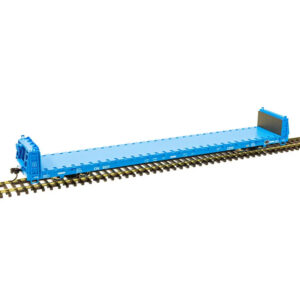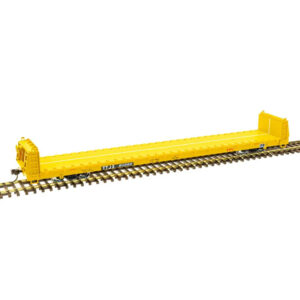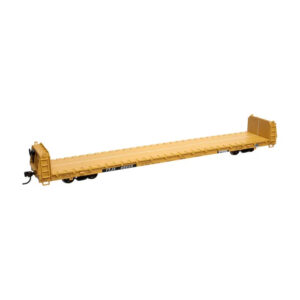Bulkhead Flat Car
Prototype Information
The 62′ bulkhead flat car is a type of railcar designed to carry large, heavy, and often irregularly shaped loads that need support to prevent shifting. It features fixed vertical bulkheads at each end to brace cargo like lumber, steel plates, pipe, or wallboard.
These cars became more common starting in the 1950s and 1960s, when the lumber and steel industries demanded safer, more efficient ways to move long materials. The 62-foot length offered a balance between capacity and track clearance, making it versatile for many shippers.
The bulkheads helped contain loads without needing full enclosures, unlike boxcars. Over time, railroads and manufacturers made variations with different deck materials, tie-down features, and reinforced structures.
Today, 62′ bulkhead flat cars remain in regular service, especially in industries like construction, forestry, and manufacturing. Their simple but sturdy design has made them a long-lasting solution for transporting tough, oversized loads.
Showing all 15 results
-
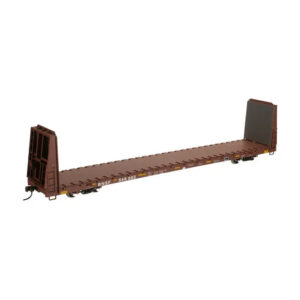
Atlas HO Trainman Bulkhead Flat Car BNSF
$25.00 Select options This product has multiple variants. The options may be chosen on the product page -

Atlas HO Trainman Bulkhead Flat Car Burlington Northern w/ Pipe Load
$28.00 Select options This product has multiple variants. The options may be chosen on the product page -

Atlas HO Trainman Bulkhead Flat Car Canadian National w/ Pipe Load
$28.00 Select options This product has multiple variants. The options may be chosen on the product page -

Atlas HO Trainman Bulkhead Flat Car GATX
$25.00 Select options This product has multiple variants. The options may be chosen on the product page -

Atlas HO Trainman Bulkhead Flat Car Illinois Central
$23.00 Select options This product has multiple variants. The options may be chosen on the product page -

Atlas HO Trainman Bulkhead Flat Car Illinois Central Gulf w/ Pipe Load
$28.00 Select options This product has multiple variants. The options may be chosen on the product page -

Atlas HO Trainman Bulkhead Flat Car Louisville & Nashville w/ Pipe Load
$28.00 Select options This product has multiple variants. The options may be chosen on the product page -

Atlas HO Trainman Bulkhead Flat Car Minnesota Dakota & Western
$25.00 Select options This product has multiple variants. The options may be chosen on the product page -

Atlas HO Trainman Bulkhead Flat Car Trailer Train “Red Logo”
$25.00 Select options This product has multiple variants. The options may be chosen on the product page -

Atlas HO Trainman Bulkhead Flat Car Trailer Train “Speed Logo”
$25.00 Select options This product has multiple variants. The options may be chosen on the product page -

Atlas HO Trainman Bulkhead Flat Car Trailer Train “Speed Logo” w/ Pipe Load
$28.00 Select options This product has multiple variants. The options may be chosen on the product page -

Atlas HO Trainman Short Bulkhead Flat Car Oregon Steel Mill
$25.00 Select options This product has multiple variants. The options may be chosen on the product page -

Atlas HO Trainman Short Bulkhead Flat Car Trailer Train “Red Logo”
$25.00 Select options This product has multiple variants. The options may be chosen on the product page -

Atlas HO Trainman Short Bulkhead Flat Car Trailer Train “Speed Logo”
$25.00 Select options This product has multiple variants. The options may be chosen on the product page -

Atlas HO Trainman Short Bulkhead Flat Car Undecorated
$21.00 Add to cart



